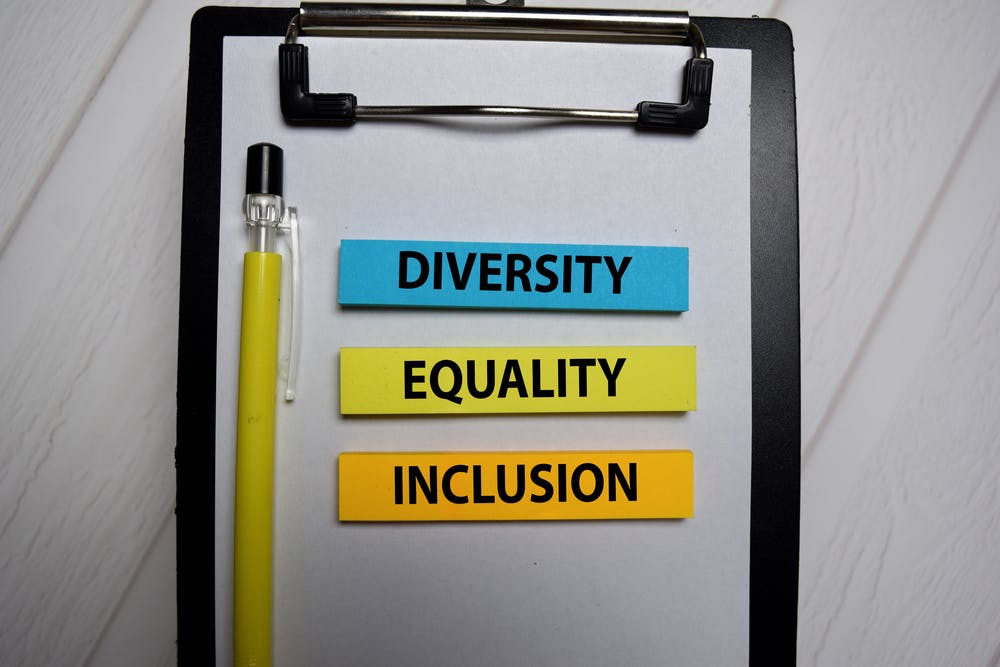As the field of gynecology increasingly comes to recognize the wide diversity of patients who seek care, an inclusive language guide can help clinicians set a welcoming tone for LGBTQIA+ patients, particularly those who are transgender or nonbinary. Using inclusive language shows that you and your practice are committed to providing exceptional care to patients of all genders and backgrounds.
Earlier this year, the American College of Obstetricians and Gynecologists (ACOG) urged OB-GYNs to educate themselves about the unique medical needs of transfeminine, transmasculine and nonbinary patients. In addition to understanding the basics of transgender care, clinicians should provide a comfortable, inclusive environment. Being considerate during patient-physician interactions demonstrates to all patients that they are welcome at your practice.
Why Use Inclusive Language?
Far from an attempt to simply be "politically correct," a language guide such as the one provided by Trans Care British Columbia actively helps clinicians care for their trans patients. Much of the language traditionally used in obstetrics and gynecology — such as "well-woman exam" — excludes a large segment of patients.
As practices begin to see more trans patients, inclusivity is crucial. Although it may feel awkward or be hard to remember at first, inclusivity becomes natural with practice. Get started with these examples.
Anatomy
Some patients may feel more comfortable using gender-neutral language to describe their bodies. For example, they may refer to the "upper body" instead of "breasts" and to "genitals" instead of "vagina" or "penis." When it comes to nursing, some patients may use the term "chestfeeding" as an alternative to "breastfeeding." Listen to how patients refer to their anatomy, and follow their lead.
Gendered Language
It's typical for many gynecologists to use female-centric language. However, patients may be trans women, trans men, nonbinary, agender, genderqueer or have other gender identities, and this language is not always a good fit.
Replace gendered terms such as "well-woman visit" or "expectant mother" with gender-neutral language such as "annual checkup" and "pregnant person." Likewise, a patient's genitals do not equate their gender: "Woman" does not always mean "person with a uterus and ovaries."
Sex vs. Gender
Sex is the classification of a person based on their hormones, chromosomes, and primary and secondary sex characteristics, while gender is tied to a person's deeply held identity. Some patients may use assigned female at birth (AFAB) or assigned male at birth (AMAB) to denote the sex marked on their birth certificate. Avoid saying that a patient is using "preferred pronouns" or "identifies" as a certain gender, which can imply that respecting or acknowledging their gender is optional for others.
Transgender
The word cisgender refers to a person whose gender identity matches the sex they were assigned at birth — for example, a woman who was assigned female at birth is considered to be a cisgender woman. The word intersex refers to someone who was born with genitalia, reproductive organs or chromosomes that do not conform to only male or female characteristics.
Transgender is an umbrella term that can refer to people who are transmasculine, transfeminine or nonbinary. Nonbinary people do not fit into a gender binary of male or female. The term is an adjective and should not be used as a noun. Likewise, the word "transsexual" is outdated. The World Professional Association for Transgender Health offers a wider glossary of terminology for healthcare providers relating to the trans community.
Transition
Trans patients may choose to transition their gender socially (changing their clothes, name, etc.), medically (using hormones), surgically or a combination of these. Surgical procedures such as phalloplasty or vaginoplasty ("bottom surgery"), facial feminization surgery, and chest or breast surgery ("top surgery") are referred to as gender affirmation procedures. The terms "sex change" and "sexual reassignment surgery" are outdated.
Although clinicians may face a learning curve when first adopting an inclusive language guide, a commitment to educating yourself and your support staff can go a long way toward helping LGBTQIA+ patients feel welcome in your practice.



